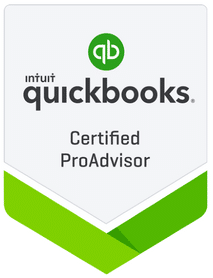- Patrick Roney
- (877) 503-8607
Follow Us :
Follow Us :
Proledge
October 23, 2010

The principal reason many businesses don’t have a budget is that it sounds like a daunting task to setup and to keep up with. They feel like it is an “all or nothing” type of approach and they pick the “nothing” route. There are actually many shades of grey in budgeting and you can easily pick the one that fits your needs. Let’s look at a minimalist approach. It should take you less than one hour and it yields great results.
The goal is to boil your business down to just 5 numbers. Get rid of all the details and oversimplify your financials to the point where you can look at your business through a 5 line spreadsheet. The numbers are:
In QuickBooks, create a P&L for a period that is representative of your business. If the business has been stable, take the last 12 months. If the business has been changing a lot, take the last 3 months.
Export this P&L to a spreadsheet
Collapse the spreadsheet down to the 5 rows listed above. This is the part that requires a bit of work, because you need to identify line by line in your P&L where they fit. For instance, identify the lines in your P&L that are fixed Expenses. Add them up and create a new row called “Fixed Expenses”.
Divide your numbers appropriately so that you get to a monthly number. For instance, if the P&L you exported was for 3 months, divide by 3.
At this point, you’ve boiled down your business to its core components. That was the hardest part. You have these 5 magic numbers that will help you look at your business through a brand new lens.
Now, create columns for the next 12 to 24 months and apply a growth rate to each of these numbers. Make sure that Income and COGS grow at the same rate (unless you have a specific plan to reduce your gross margins) and that Fixed Expenses don’t grow. The trickiest part is to define the growth of your Variable Expenses. In doubt, start with 1/3 of the growth of your Income.
You now have a forecast. It will tell you a lot about your business and will allow you to know where the key levers are for profitability. To call this “forecast” a “budget”, you just need to repeat this process once a month or once a quarter and compare your new spreadsheet to the old one.
The funny thing about this approach is that it often gives you as much accuracy in your forecast, as if you had taken your P&L line by line and tried to forecast each individual line. The reality with the latter approach is that you are forced to make so many assumptions along the way that you end up having as big a swag in term of forecast as with the minimalist approach described above.


Fill out the form below to sign up to our Blog Newsletter and we’ll drop you a line when new articles come up.
Bookkeepers.
Professional. Affordable.
ProLedge is a bookkeeping services firm.
Copyright © 2024 All rights reserved.
Hello. Can we help you?